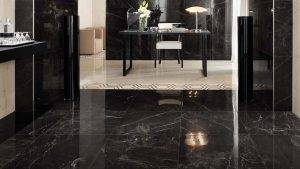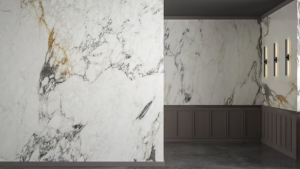Marble countertops are a popular choice for kitchens due to their timeless beauty, durability, and natural elegance. Whether you’re renovating your kitchen or installing a new countertop, choosing marble can elevate the overall aesthetic of your space. However, proper installation is crucial to ensure longevity and a flawless finish. In this guide, we will walk you through the step-by-step process of installing marble countertops, from preparation to finishing touches. Whether you’re a DIY enthusiast or hiring a professional, understanding the installation process helps you make informed decisions. Additionally, sourcing high-quality marble from a trusted supplier ensures you get the best material for your kitchen. By the end of this guide, you’ll learn the necessary tools and materials for installation, how to measure, cut, and fit marble slabs, best practices for securing and sealing marble countertops, maintenance tips to keep your countertop looking pristine, and where to find reliable suppliers. Let’s dive into the details and learn how to install kitchen marble countertops like a pro.
Step-by-Step Installation Process
Applying Adhesive and Setting the Countertop
- Apply thin-set mortar or a strong adhesive evenly over the base.
- Gently place the marble slab on top and press down to secure it.
- Use a rubber mallet to ensure it sits firmly without air gaps.
- If installing tiles, lay them row by row, ensuring even spacing.
Sealing and Finishing the Marble Countertop
- Once the countertop is in place, apply silicone caulk along the edges.
- Fill any seams with epoxy resin for a smooth finish.
- Use a premium sealant to safeguard the marble against stains and moisture.
Tools and Materials Needed
Before beginning the installation, collect all required tools and materials. Here’s a checklist to ensure you’re fully prepared:
Tools:
- Measuring tape
- Level
- Circular saw with a diamond blade
- Clamps
- Safety goggles and gloves
- Notched trowel
- Rubber mallet
- Caulk gun
- Wet saw (for precise cutting)
Materials:
- Marble slabs or tiles
- Adhesive or thin-set mortar
- Sealant
- Silicone caulk
- Epoxy resin (for joints)
- Wood shims
- Sandpaper (for smoothing edges)
Ensuring you have high-quality marble slabs is key to a successful installation. Consider sourcing from top suppliers to get the best material.
Preparing for Installation
Measuring and Cutting the Marble Slab
- Measure your countertop space carefully and mark the dimensions on the marble slab.
- Use a circular saw with a diamond blade to cut the marble accurately.
- Smooth the edges using sandpaper to prevent sharp corners.
- If using tiles, ensure they fit seamlessly together for a clean look.
Preparing the Base
- Ensure the cabinet or base is level before placing the marble stone countertop.
- Use wood shims to balance any uneven surfaces.
- Clean the area to remove any dust and debris before applying adhesive.
Post-Installation Care and Maintenance
Proper care and maintenance will help preserve the beauty and durability of your marble countertops. Follow these essential tips to keep them in top condition:
Daily Cleaning Tips:
- Use a soft cloth or microfiber towel with mild soap and warm water to clean spills immediately.
- Avoid acidic or harsh cleaners like vinegar, lemon juice, or bleach, as they can cause etching and dull the surface.
- Wipe the surface with a dry, lint-free cloth after cleaning to prevent water spots and streaks.
- For stubborn stains, use a marble-safe cleaner or a baking soda paste (gently applied, then rinsed with water).
Long-Term Maintenance:
- Sealing: Reapply with a high-quality marble sealant every 6-12 months to protect against stains and moisture penetration. Perform a water drop test periodically to check if resealing is needed.
- Heat Protection: Always use coasters, trivets, or heat-resistant pads under hot pots, pans, and appliances to prevent heat damage.
- Scratch Prevention: Avoid dragging heavy objects across the surface, and use cutting boards instead of cutting directly on the marble.
- Impact Protection: Marble is a natural stone and can chip or crack under heavy impact. Be mindful when handling heavy cookware or objects near edges and corners.
- Stain Prevention: Wipe up spills from acidic substances like wine, coffee, and citrus juices immediately to prevent staining.
By following these care tips, you can maintain the elegance and longevity of your marble countertops for years to come. For high-quality materials, consider purchasing from reliable marble suppliers in Sharjah.
Common Mistakes to Avoid
- Skipping the sealing process: This can lead to stains and damage over time. Always ensure that your marble countertop is properly sealed to protect it from moisture and spills.
- Uneven installation: Failing to level the base can result in an unstable countertop. Make sure to use a professional installer or check that the base is even before placement.
- Using the wrong adhesive: Not all adhesives work well with marble; ensure compatibility to prevent weak bonds or damage over time.
- Not leaving space for expansion: Marble can expand with temperature changes, so slight gaps are necessary to prevent cracks or warping.
- Improper cleaning methods: Using acidic or abrasive cleaners can erode the surface and cause discolouration. Stick to pH-neutral cleaners specifically designed for marble.
- Neglecting regular maintenance: Over time, dirt and grime can accumulate on white marble tiles, dulling their shine. Regular cleaning and periodic resealing can help maintain their appearance and durability.
Where to Buy Quality Marble for Kitchen Countertops
For the best results, purchase marble from reputable suppliers. Here are some top options:
- Premium marble suppliers: These suppliers offer a variety of high-quality marble styles, including classic and exotic patterns to suit different kitchen designs. If you’re looking for top-quality options, consider marble suppliers in Dubai for a wide selection.
- Affordable and reliable suppliers: If you are looking for cost-effective options without compromising on quality, certain suppliers specialize in providing marble at competitive prices.
- Trusted wholesale suppliers: These suppliers cater to bulk buyers and offer diverse options, including marble tiles, slabs, and flooring solutions.
- Online marketplaces: Some reputable online platforms offer a wide range of marble products with customer reviews, detailed descriptions, and delivery options.
Before making a purchase, compare different marble suppliers in UAE, read reviews, and check for warranties or return policies to ensure you get the best quality marble for your kitchen countertop.
Conclusion
Installing kitchen marble countertops requires precision, patience, and the right materials. By following these steps, you can achieve a flawless finish that enhances the beauty of your kitchen. Always buy from a trusted supplier to ensure quality and durability. Whether you opt for white marble floors, marble tiles, flooring, or stone, proper installation and maintenance will ensure long-lasting elegance.
Frequently Asked Questions
What is the lifespan of marble countertops?
With the right upkeep, marble counters remain durable for 20 years or longer. Regular sealing, cleaning, and maintenance help them stay beautiful and durable for a long time.
Is it hard to install marble countertops?
Far far away, behind the word mountains, far from the countries Vokalia and Consonantia, there live the blind texts. Separated they live in Bookmarksgrove right at the coast of the Semantics, a large language ocean.
Do marble countertops crack easily?
Marble is strong but can crack if it’s not supported well or if heavy objects are dropped on it. Correct installation and regular maintenance help minimise the chances of cracks.
How do you secure a stone countertop to a cabinet?
Stone countertops are usually attached to cabinets using strong adhesives and sometimes screws or brackets for extra support. Professional installers ensure the cabinets are level and can hold the weight.
What not to do with marble countertops?
Avoid using harsh cleaners, acids like vinegar or lemon, and abrasive pads on marble. Don’t place hot pans directly on the surface, and always clean spills quickly to prevent stains.






